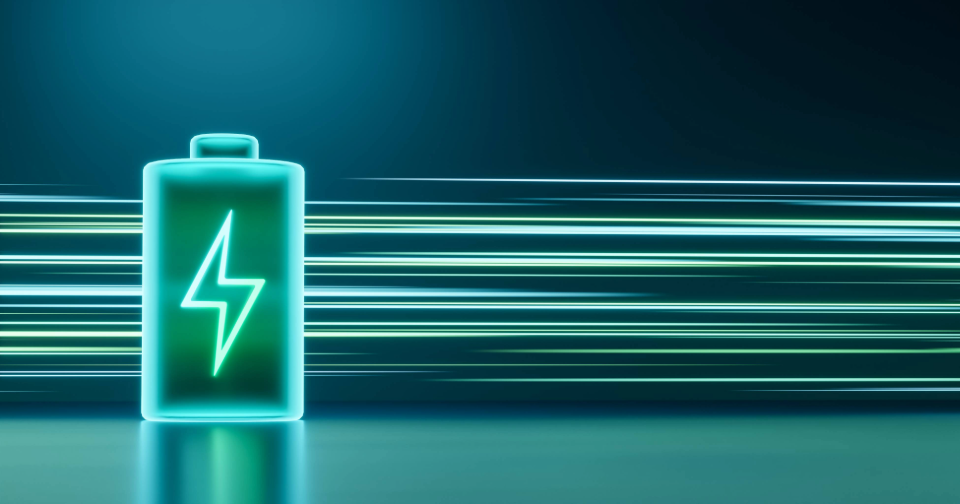Most people have heard some version of a horror story about a laptop spontaneously catching fire or a mobile phone heating up or even melting. Despite their widespread use, the standard design of current lithium-ion (Li-ion) batteries makes this an inherent risk. But what innovations are under development to try to prevent these phenomena? Sam Bailey investigates.
Exploring electrolytes
At present the standard Li-ion battery chemistry makes use of a liquid electrolyte to shuttle lithium ions between the electrodes. This is typically a lithium salt (such as LiPF6) in an organic solvent. And it is this solvent that gives Li-ion batteries their unwelcome flammability. Different approaches are being explored to avoid the use of this flammable solvent. Broadly speaking these include either maintaining a liquid electrolyte and reducing the flammability; or switching to a solid electrolyte system. Both options have their pros and cons.
Aqueous electrolytes
One option in the liquid electrolyte field is to use aqueous systems. A company winning awards with this approach is Geyser batteries, a start-up based in Finland. One of the difficulties with aqueous electrolytes is that at higher battery voltages (not much above 1V), the water in the electrolyte can start to split into its constituent hydrogen and oxygen with potentially explosive consequences. As illustrated in one of their patent applications Geyser address this problem by using a proprietary electrolyte containing high concentrations of specific salts to provide a commercially viable high-power heavy-duty battery system.
Some of the difficulties associated with any liquid electrolyte system are the control of the formation of unwanted structures in the battery following repeated charge and discharge cycles. These can include lithium dendrites which can short circuit the battery if they protrude through the cathode/anode separator structure; or solid-electrolyte interphases (SEIs) that form over time on the surface of the electrode and impair the performance of the battery. To avoid these issues, the other principal approach that is being explored in electrolyte innovation is to dispense with the liquid phase completely and switch to a solid electrolyte.
Solid electrolytes
The use of solid electrolytes offers some significant advantages in terms of simplified cell design and improved safety. However, they also come with drawbacks, most notably the relatively low ionic conductivity of solids and the brittle nature of some of the electrolyte materials.
Lithium phosphorus oxynitride (“LiPON”) is a glassy compound that has emerged as a candidate for solid electrolytes. However the material is brittle and the methods used to make it usually involve ceramic processing methods such as sputter coating onto a surface. This is not an ideal manufacturing method for large scale production and can also require large amounts of excess lithium to achieve the desired chemical composition in the electrolyte layer.
Research at Oak Ridge National Laboratories in the USA described in their recently-published patent application has led to development of LiPON-derivative materials that retain the high ion conductivities but without requiring the excess lithium in the manufacturing process allowing a greater range of electrolyte compositions to be explored.
Composite electrolytes
This same group has also made progress addressing a further drawback of many solid electrolyte systems. Glassy materials such as LiPON may be good at preventing the detrimental lithium dendrite formation but they are typically brittle so require careful handling. A further recently published patent application describes the formation of solid electrolyte layers that combine the beneficial ion conductivity of a ceramic electrolyte materials with a more physically robust polymer system. In these systems, a porous ceramic layer is formed and is then impregnated with a polymer electrolyte, such as polyethylene oxide-based materials, to give a much more robust solid composite electrolyte layer.
Ongoing innovation
When you add fully polymeric electrolytes into the equation as further alternatives, you can see that there are multiple, diverse, ways in which the problems associated with the conventional liquid systems are being addressed. Despite this none have yet proven to be a clear stand-out replacement for organic electrolyte systems. The huge rewards for whoever manages to balance the competing electrochemical and physical demands of these complex systems means that the pace of innovation is likely to remain rapid for at least the next few years and the number of patent applications in this field are likely to increase in line with those for other aspects of the battery system.
This blog was originally published in Green Business Journal.
Sam is an accomplished UK and European patent attorney specialising in chemistry and materials science, with a particular interest in battery technology and pharmaceutical chemistry. He has extensive experience and a proven track record of success in securing and defending IP rights for his clients.
Email: sam.bailey@mewburn.com

-3.png)
